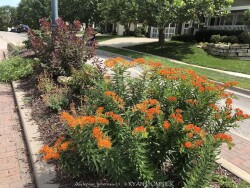
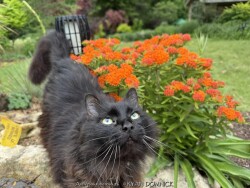
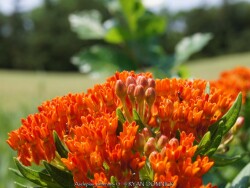
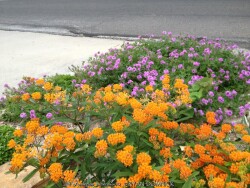
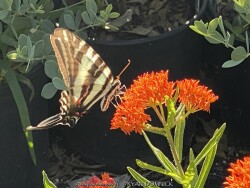
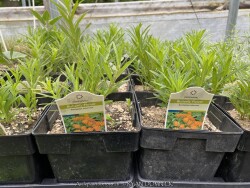
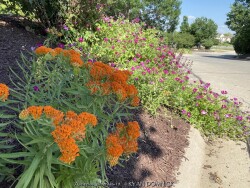
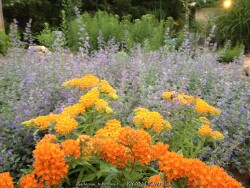
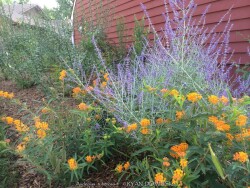
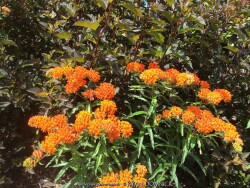

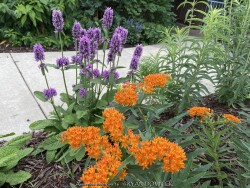
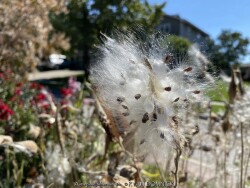
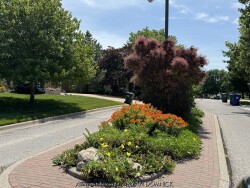
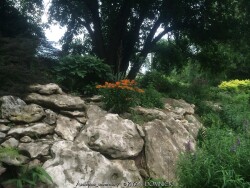
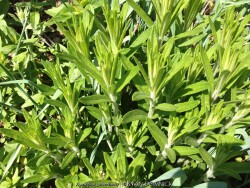
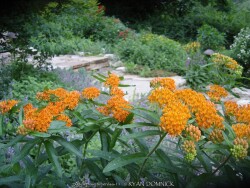
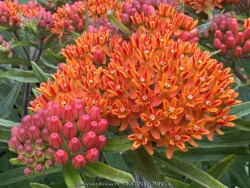
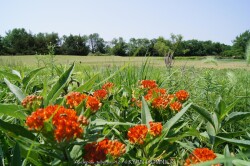
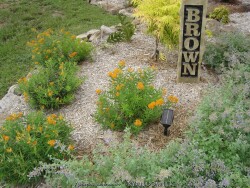
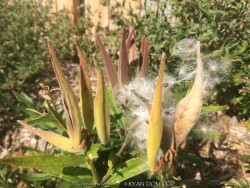
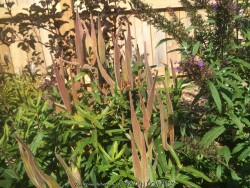
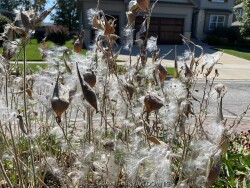
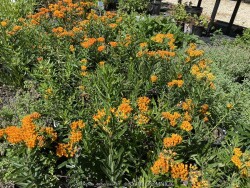
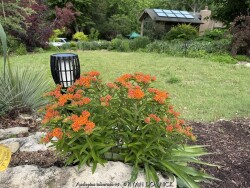

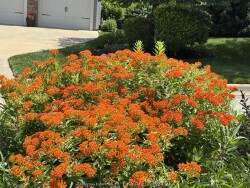
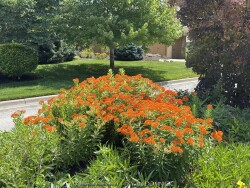
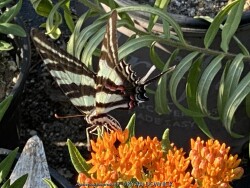
Plant Min Zone: 3a
Plant Max Zone: 9b
Sunlight: All Day Full Sun, Full Sun, Part Sun
Water / Rainfall: Very Low, Low
Soil Quality: Poor, Average
Bloom Season: Summer, Late Summer
Flower Color: Orange, Orangish Red, Orangish Yellow, Mixed Colors
Berry / Fruit Color: Brown-Beige
Spring Foliage Color: Green
Summer Foliage Color: Green
Fall Foliage Color: None: Dormant
Evergreen Foliage: No
Winter Interest: Some
Scented Flowers: No
Drought Tolerance: High
Wet-Feet Tolerance: Low
Humidity Tolerance: Low, Medium
Wind Tolerance: High
Poor Soil Tolerance: Rocky Soils, Sandy Soils, Shallow Soils
Height: 1.5' - 2'
Width: 1' - 1.5'
Growth Rate: Slow, Medium
Service Life: Medium: 3-5 years
Maintenance Need: Low
Spreading Potential: Low
Yearly Trimming Tips: Trim Perennial to Ground in Early Winter After Hard Freezes: Some Winter Interest.
Plant Grouping Size: Small Grouping of 3-5
Best Side of House: South Exposure, West Exposure
Extreme Planting Locations: Survives Severe Drought, Tolerates Extreme Heat, Top of Retaining Wall Locations, Resistant to Rabbits, Crevice Gardens
Ornamental Features: Multiple Seasons of Interest, Long Blooming Season
Special Landscape Uses: Naturalizing
Possible Pest Problems: Stem/Crown Disease, Foliage Disease, Aphids
Plant Limitations: May Needs Staking, Needs Excellent Drainage, Late to Emerge or Leaf Out in Spring, May be Poisonous
Shippable in 2026: YES
Orange Butterfly Milkweed (Asclepias tuberosa) is a native wildflower with bright orange flowers occurring mostly in dry open habitats and is very common in the prairies and grasslands of the Midwest and Great Plains. Common in Kansas, this beautiful native wildflower is also found from Maine to South Dakota to the desert southwest to Florida. In ideal locations established Butterfly Weeds are very showy with multiple flowering stems spreading across the two foot high plant. Mature plants also have a deep tap root that extends down a foot or more allowing them superb drought tolerance. This rugged species thrives in sunny locations, in dry sandy soil or well-drained loam. More permanent locations include limestone bluffs, rocky prairies, and Great Plains. This wildflower also colonizes readily with wind blown fluffy seeds and will grow under the mower blades sometimes completing their flowering before yearly mowing along state highways. Foliage is often green, upright and attractive. Flowering is long lasting usually 4-6 weeks with interesting seed pods developing later. These eventually open and seeds float away. Reseeding is rare in the garden as mulch will generally eliminate that possibility. In the landscape, Orange Butterfly Weed can be used in any dry soil situation including berms, hot south or west side of the house, or any other full sun area. These will grow in poor rocky, sandy or clayish soils and even rich organic soils as a beautiful flowering annual. With our average 40 inches of rain per year in eastern Kansas, extra irrigation is not recommended. When used as an annual with irrigation and rich garden soil, you can expect the amazing growth and summer flowering followed by a probable root rot in the winter. Orange Butterfly Weed can be planted in parking lot medians and other hell strips as a very durable groundcover. Orange Butterfly Weed can also thrive in an above-ground perennial planter (with appropriate potting soil) year-round surviving the winter coldness in Eastern Kansas (zone 6a/5b). In any situation, combine with any other flower colors except orange. There is quite a lot of diversity within the species so plants from different locales will have different foliage and flower shades adapted to the site. Flower color can range from almost red to pure yellow and everything in between.